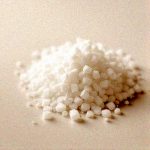Takeaways
- Sugar can trigger migraines in some people
- Blood sugar fluctuations may contribute to headaches
- Balanced nutrition helps manage migraines
- Artificial sweeteners affect people differently
- Tracking diet and symptoms aids management
- Proper hydration supports migraine prevention
Understanding Migraines
Migraines are severe headaches that often cause throbbing pain. They frequently include symptoms like nausea and increased sensitivity to light and sound. Around 12% of individuals experience migraines regularly.[1]
Various factors can trigger migraines. Common triggers are stress, lack of adequate sleep, and consuming certain foods.[2] Some individuals have observed that sugar intake can influence their migraines.[3]
The relationship between sugar and migraines is complex and varies from person to person. This section explores how sugar might affect headaches and suggests possible steps to address this issue.
Sugar and the Body
Blood Sugar Levels
Our bodies convert the food we consume into glucose, a type of sugar.[4] Glucose provides us with energy. After eating, our blood sugar levels increase, then they decrease as our cells utilize the glucose.
Multiple elements can cause changes in blood sugar levels, including:
- What we eat
- How much we eat
- When we eat
- Our activity level
- Stress
- Medications
Maintaining stable blood sugar is important for proper bodily function.[5] Significant fluctuations in blood sugar can create problems.
Insulin Response
Insulin is a hormone that regulates blood sugar.[6] It assists in moving glucose from the bloodstream into cells. When sugar is consumed, insulin is released to process it.
Some people exhibit reduced sensitivity to insulin.[7] In such instances, the body might produce more insulin to compensate, potentially causing blood sugar variations.
The Sugar-Migraine Link
Blood Sugar Fluctuations
Changes in blood sugar levels might trigger migraines in some people.[8] When blood sugar decreases, it can cause headaches, a condition known as hypoglycemia.[9]
Elevated blood sugar, or hyperglycemia, may also result in headaches.[10] Some individuals experience migraines when their blood sugar levels change rapidly.
| Blood Sugar Level | Symptoms |
|---|---|
| Low (Hypoglycemia) | Headache, dizziness, shakiness |
| Normal | No symptoms |
| High (Hyperglycemia) | Headache, thirst, blurry vision |
These symptoms can differ from person to person. The reaction to changes in blood sugar is not the same for everyone.[11]
Inflammation and Sugar
Consuming substantial amounts of sugar could lead to inflammation in the body. Some studies suggest a connection between inflammation and migraines. Here is how sugar might contribute to inflammation:
- You eat sugary food
- Blood sugar rises quickly
- Body releases inflammatory chemicals
- Blood vessels in the brain react
- This reaction might trigger a migraine
Further studies are needed to fully understand the connection between sugar intake, inflammation, and migraines.[12]
Types of Sugar and Their Effects
Natural vs. Added Sugars
Natural sugars are found in foods like fruits and milk, while added sugars are incorporated into foods during processing. Our bodies metabolize both types of sugar in a similar way.[13]
Foods with naturally occurring sugars often contain other beneficial nutrients, including:
- Fiber
- Vitamins
- Minerals
Added sugars typically lack these additional nutrients. They are commonly found in:
- Sodas
- Candy
- Baked goods
- Many processed foods
Glycemic Index and Load
The glycemic index (GI) measures how quickly a food raises blood sugar levels. The glycemic load (GL) considers both the GI and the amount of carbohydrates in a serving.
Foods with a high GI or GL may have a stronger impact on migraines due to the faster changes they cause in blood sugar.[14]
| Food | Glycemic Index | Glycemic Load |
|---|---|---|
| Apple | 36 (Low) | 6 (Low) |
| White bread | 75 (High) | 10 (Medium) |
| Soda | 63 (Medium) | 16 (High) |
Choosing foods with a lower GI and GL can help stabilize blood sugar levels.
Sugar Alternatives and Migraines
Artificial Sweeteners
Artificial sweeteners offer a sweet taste without adding calories. Common artificial sweeteners include:
- Aspartame
- Sucralose
- Saccharin
- Stevia
Some people find that artificial sweeteners trigger migraines, while others do not experience any issues.[15] The effect varies individually.
Natural Sugar Substitutes
There are natural alternatives to sugar, including:
- Honey
- Maple syrup
- Coconut sugar
- Monk fruit sweetener
These natural sweeteners still affect blood sugar levels.[16] However, some people prefer them over artificial options. Individual reactions will differ.
Dietary Strategies for Migraine Management
Low-Sugar Diets
Reducing sugar intake may help some individuals manage their migraines.[17] This doesn’t require eliminating all sugar, but finding a balanced approach.
Here are a few tips for reducing sugar consumption:
- Read food labels
- Choose whole foods over processed ones
- Limit sugary drinks
- Satisfy sweet cravings with fruit
Implementing changes gradually is usually more effective. Abrupt large changes can be challenging to maintain over time.
Balanced Nutrition
Consuming a variety of foods supports overall health and may aid in managing migraines. A balanced diet should include:
- Fruits and vegetables
- Whole grains
- Lean proteins
- Healthy fats
Eating at consistent times is also important.[18] Skipping meals could trigger migraines for some people.[19]
Steps for developing a balanced meal plan include:
- Include protein, carbs, and fat in each meal
- Eat a variety of colorful fruits and vegetables
- Choose whole grains over refined ones
- Include lean proteins like fish, poultry, or beans
- Add healthy fats from nuts, seeds, or avocado
This strategy helps to maintain steady blood sugar and provides the body with essential nutrients.
Hydration and Migraines
Adequate water intake is vital in migraine prevention. Dehydration can trigger headaches and affect blood sugar regulation.[20]
Many individuals do not consume enough water daily. Signs of dehydration include:
- Thirst
- Dark urine
- Dry mouth
- Fatigue
Here are some hydration tips for people who experience migraines:
- Carry a water bottle
- Drink water with each meal
- Eat water-rich foods like cucumbers and watermelon
- Limit caffeine and alcohol
Proper hydration helps support overall health and may also play a role in preventing migraines.
Exercise and Blood Sugar Regulation
Regular physical activity helps regulate blood sugar levels, which can be beneficial for individuals with migraines.[21] Exercise uses glucose for energy and improves the body’s insulin sensitivity.
Exercise offers several potential benefits for migraine management:
- Better blood sugar control
- Reduced stress
- Improved sleep quality
- Enhanced overall health
Recommended exercises for migraine prevention include:
- Start with low-impact activities like walking
- Try yoga or tai chi for stress relief
- Build up to moderate cardio exercise
- Include strength training 2-3 times a week
- Always warm up and cool down properly
Start slowly and gradually increase the intensity and duration of exercise. Intense exercise can trigger migraines in some individuals.
Sleep and Blood Sugar Balance
Quality sleep helps in regulating blood sugar. Inadequate sleep can disrupt this balance and potentially increase the risk of migraines.[22]
Sleep deprivation can affect hormones that control hunger and fullness, potentially leading to overeating and spikes in blood sugar.
Here are some sleep hygiene tips for those prone to migraines:
- Stick to a regular sleep schedule
- Create a dark, quiet sleep environment
- Avoid screens before bedtime
- Limit caffeine and alcohol in the evening
- Practice relaxation techniques before sleep
Good sleep habits contribute to overall well-being and may help in decreasing the frequency of migraines.
Stress Management and Sugar Cravings
Stress often increases sugar cravings and can also trigger migraines directly.[23] Managing stress may help with both concerns.
When under stress, some individuals may turn to sugary foods for comfort, which may cause blood sugar fluctuations and potentially increase migraine occurrences.
Effective stress reduction techniques include:
- Deep breathing exercises
- Meditation or mindfulness practice
- Regular physical activity
- Spending time in nature
- Talking with friends or a therapist
Adopting healthy coping mechanisms for stress can improve overall health, reduce sugar cravings, and potentially reduce the occurrence of migraines.
Monitoring and Tracking
Food Diaries
Keeping a food diary helps identify potential migraine triggers and may reveal patterns between diet and headaches, particularly concerning sugar intake.[24]
Elements to include in a food diary should consist of:
- What you eat and drink
- When you eat
- How much you eat
- Any symptoms you experience
- Stress levels and sleep quality
Regularly review your food diary to find any connections between specific foods and the onset of migraines.
Blood Sugar Monitoring
Monitoring blood sugar levels can be beneficial for migraine management, especially for people with diabetes or pre-diabetes.[25]
Blood sugar monitoring can show how different foods affect your levels, potentially uncovering links between sugar levels and the appearance of headaches.
Steps for effective blood sugar monitoring involve:
- Consult your doctor about monitoring
- Get a blood glucose meter
- Test at recommended times
- Record results in a log
- Look for patterns over time
Not everyone needs to monitor their blood sugar. Consult with a doctor to determine if this practice is appropriate for your situation.
When to Seek Medical Help
Professional medical assistance may be necessary for migraines. Seek medical advice under the following circumstances:
- Migraines are frequent or severe
- Over-the-counter medicines don’t help
- Headaches interfere with daily life
- You have new or unusual symptoms
Signs that indicate immediate medical care is necessary include:
- Sudden, severe headache
- Headache with fever, stiff neck, or rash
- Headache after a head injury
- Headache with confusion or trouble speaking
A healthcare professional can provide a proper diagnosis and suitable treatment. They can help you develop a management plan tailored to your specific needs.
FAQ
Migraines impact millions of people worldwide. Understanding triggers, including the role of sugar, can aid in managing these conditions. Individual experiences vary, and what works for one person might not work for another. If you experience migraines, observe how your diet affects you. Pay attention to how different foods, including sugars, impact your condition. Keeping a food diary can help identify potential patterns. Always discuss your symptoms with your doctor. Remember that migraine management usually requires more than just dietary adjustments. Regular sleep, stress management, and exercise all play a significant role. A holistic approach typically yields the best outcomes. Do not be discouraged if you do not see immediate results. Discovering the right balance takes time and effort. With persistence, you can create strategies to reduce the frequency and intensity of your migraines. Stay informed about the latest migraine research. New findings may offer additional strategies to manage symptoms. However, it’s essential to consult with a healthcare professional before making significant changes to your diet or lifestyle. By understanding the relationship between sugar and migraines, you take a significant step towards actively participating in your health. This awareness empowers you to make informed decisions regarding your diet and lifestyle. Remember that you are not alone. Millions of people struggle with migraines. Support groups and online communities can provide valuable guidance and encouragement. Sharing experiences with others who understand can be particularly helpful. Be patient and compassionate with yourself. Managing migraines can be challenging. Acknowledge and appreciate any progress you make. With time and effort, you can find ways to reduce the impact of migraines on your daily life.Can sugar cause migraines?
How long after eating sugar can a migraine start?
What foods help with migraines?
Is sugar good for headaches?
Can cutting out sugar help migraines?
How does blood sugar affect migraines?
Are artificial sweeteners better for migraine sufferers?
Can fruit trigger migraines?
The prevalence of migraines varies across populations, but 12% is a commonly cited figure representing the global average of individuals experiencing migraine.
Source: “Care Gaps and Recommendations in Vestibular Migraine: An Expert Panel Summit” https://www.ncbi.nlm.nih.gov/pmc/articles/PMC8762211/
These factors are widely recognized as triggers by both the medical community and individuals with migraines. Identifying personal triggers is important for migraine management.
Source: “Care Gaps and Recommendations in Vestibular Migraine: An Expert Panel Summit” https://www.ncbi.nlm.nih.gov/pmc/articles/PMC8762211/
While not universal, some individuals have identified sugar consumption as a personal migraine trigger. This is likely due to the impact of sugar on blood glucose levels.
Carbohydrates are broken down into glucose by the digestive system, which serves as the body’s primary source of energy.
Fluctuations in blood sugar levels can lead to various health problems and can impair energy regulation in cells.
Insulin is a key hormone produced by the pancreas that facilitates the movement of glucose from the bloodstream into cells for energy use.
Insulin resistance is a condition where the body’s cells don’t respond well to insulin, leading to higher blood sugar levels and the need for more insulin.
Both hypoglycemia (low blood sugar) and hyperglycemia (high blood sugar) can potentially trigger migraines in susceptible individuals. The rapid changes are most often the main issue.
Low blood sugar is a known trigger for headaches and other symptoms due to the brain’s high demand for glucose as a primary fuel source.
High blood sugar, while not as common as hypoglycemia as a trigger, can cause headaches and related symptoms in some people. Blood sugar fluctuations are more often the issue
People can have varying sensitivity to changes in blood sugar levels. Some are more susceptible to headaches due to these fluctuations than others.
While there is evidence suggesting a connection, the mechanisms linking sugar intake, inflammation, and migraines still need to be more fully explored through further scientific research.
From a metabolic perspective, the body breaks down both natural and added sugars into glucose and other usable forms of energy in a similar way, although they may impact overall nutrition and health differently.
Foods that cause rapid spikes in blood sugar (those with high GI and GL values) may exacerbate migraines in sensitive individuals due to the resulting fluctuations in glucose.
Some people report artificial sweeteners as migraine triggers, while others do not experience any adverse effects, indicating a varied sensitivity.
While sometimes perceived as healthier, natural sweeteners still contain sugars that the body converts to glucose, thus impacting blood sugar levels.
Based on the evidence that fluctuations in blood sugar are a potential trigger, reducing sugar consumption can be part of a migraine management strategy, though effectiveness can vary.
Maintaining a regular eating schedule can help keep blood sugar levels stable, which may reduce migraine frequency.
Skipping meals leads to drops in blood sugar and can contribute to the onset of migraines in susceptible people. This is often due to the release of stress hormones and drop in glucose.
Dehydration can reduce blood volume and impair metabolic processes, which can contribute to both headaches and blood sugar instability.
Physical activity increases insulin sensitivity and helps utilize glucose, stabilizing blood sugar levels, which may help reduce the frequency of migraines.
Lack of sleep disrupts hormonal balance, including those involved in glucose control, and may increase the frequency of migraines.
Stress can lead to both increased cravings for sugary foods and may directly trigger migraines via neuroendocrine pathways.
Recording foods consumed and when migraines occur is a useful method to identify potential dietary triggers for migraines, such as fluctuations in sugar consumption and onset of symptoms.
Monitoring blood sugar levels can help identify and manage fluctuations that could contribute to migraines and identify links between blood glucose and onset of symptoms.
For individuals sensitive to sugar, rapid shifts in glucose can trigger migraines due to physiological responses to changes in blood sugar levels.
The timing of migraine onset after sugar ingestion varies, with some individuals experiencing headaches within an hour while others experience them later.
Magnesium has been shown to be a helpful supplement in the reduction of migraines, and can be found in nuts and leafy greens.
While a small number of individuals may experience temporary relief from sugar, the subsequent fluctuations in blood sugar can often lead to more severe pain, making it a less effective strategy.
If sugar is suspected as a trigger, reducing sugar intake may reduce the frequency of migraines, based on the hypothesis that blood sugar fluctuations trigger onset in some.
Rapid fluctuations in blood sugar are considered a migraine trigger in some individuals. Blood sugar stabilization is a helpful strategy for mitigation.
The response to artificial sweeteners is highly individual, with some individuals reporting migraines and others having no issues.
While fruits are generally healthy, certain types, including citrus, can trigger migraines in susceptible individuals, although they are not considered a common cause.



